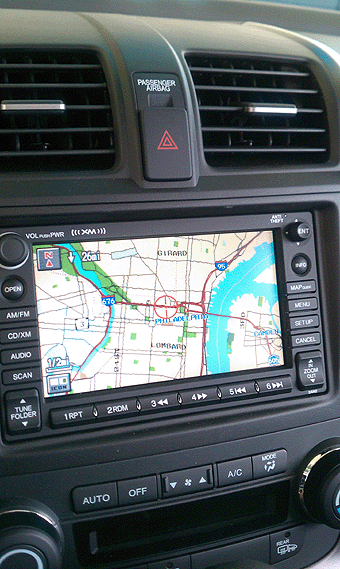The Evolution of In-Dash Car Navigation Systems
In-dash car navigation systems have come a long way since their inception. Gone are the days of unfolding paper maps on the side of the road or frantically searching for landmarks to find your way. Today, thanks to cutting-edge GPS technology, these systems have become an essential feature in many vehicles.
Benefits of In-Dash Car Navigation
Convenience: The most obvious advantage of an in-dash car navigation system is its convenience. It eliminates the need to fumble with your smartphone or a standalone GPS device, allowing you to focus entirely on the road.
Accuracy: In-dash navigation systems use real-time GPS data and map updates, ensuring you always have the latest information about your route. This level of accuracy can be a game-changer when navigating unfamiliar territory.
Safety: Safety should always be a top priority while driving. In-dash navigation systems reduce distractions by providing clear, audible turn-by-turn directions and visual maps right on your vehicle’s dashboard.
Traffic Updates: Many in-dash systems come equipped with live traffic updates, helping you avoid congestion and saving valuable time during your journey.
Integration: Modern in-dash systems often integrate seamlessly with other vehicle features, such as entertainment and climate control. This enhances the overall driving experience.
Understanding GPS Technology
In-dash car navigation systems rely on Global Positioning System (GPS) technology to determine your precise location and guide you to your destination. The GPS system comprises a network of satellites orbiting the Earth. These satellites communicate with your in-dash system to provide accurate information about your location, speed, and direction.
The in-dash system uses this data to plot a route, calculate estimated arrival times, and offer alternative routes in case of traffic jams or road closures. It’s important to note that while GPS technology is incredibly accurate, it can be influenced by various factors, such as atmospheric conditions and tall buildings.
Types of In-Dash Car Navigation Systems
When it comes to in-dash car navigation, there are two primary types to consider:
Factory-Installed Systems: These systems come pre-installed in many modern vehicles. They are seamlessly integrated into the dashboard, offering a clean and polished look. Factory-installed systems are often easier to use and are designed to work flawlessly with the vehicle’s existing technology.
Aftermarket Systems: If your vehicle didn’t come with a built-in navigation system, you can opt for an aftermarket solution. These systems are designed to fit a wide range of car models and are installed by professionals. Aftermarket systems are customizable, offering various features and screen sizes.
Choosing the Right In-Dash Car Navigation System
Selecting the right in-dash car navigation system is crucial to ensure you get the most out of this technology. Here are some key factors to consider when making your choice:
Compatibility: If your vehicle doesn’t have a factory-installed system, make sure the aftermarket system you choose is compatible with your car’s make and model.
Features: Consider the features that matter most to you. Do you need live traffic updates, voice recognition, or smartphone integration? Make a list of your priorities before shopping.
Screen Size: The size of the display matters for visibility and ease of use. A larger screen can provide a better view of the map and directions.
User Interface: A user-friendly interface is essential. Test the system’s interface to ensure it’s intuitive and easy to navigate while driving.
Map Updates: Check how frequently the navigation system receives map updates. Outdated maps can lead you astray.
Voice Guidance: Clear and concise voice guidance is critical, as it minimizes distractions and enhances safety.
Price: In-dash car navigation systems come in a wide price range. Determine your budget and look for options that meet your needs without overextending your finances.
Maintaining Your In-Dash Car Navigation System
To keep your in-dash car navigation system in top-notch condition, follow these maintenance tips:
Regular Updates: Keep your maps and software up to date. Manufacturers often release updates that improve accuracy and performance.
Screen Care: Clean the screen regularly to maintain visibility. Use a microfiber cloth to avoid scratches.
Check Connections: Ensure that all cables and connections are secure. Loose connections can cause malfunctions.
Protect from Extreme Temperatures: Extreme heat or cold can affect the performance of your in-dash system. Park in the shade or use a sunshade to protect your dashboard from direct sunlight.
Consult the User Manual: If you’re uncertain about any aspect of your navigation system, consult the user manual for guidance.
Conclusion
In-dash car navigation systems have become indispensable for modern drivers. Their combination of convenience, accuracy, and safety makes them an invaluable addition to any vehicle. Whether you opt for a factory-installed system or an aftermarket solution, the benefits of in-dash navigation are clear. By understanding GPS technology, choosing the right system, and maintaining it properly, you can enjoy a stress-free and efficient driving experience for years to come. Say goodbye to wrong turns and missed exits; with in-dash car navigation, you’re always on the right track.


